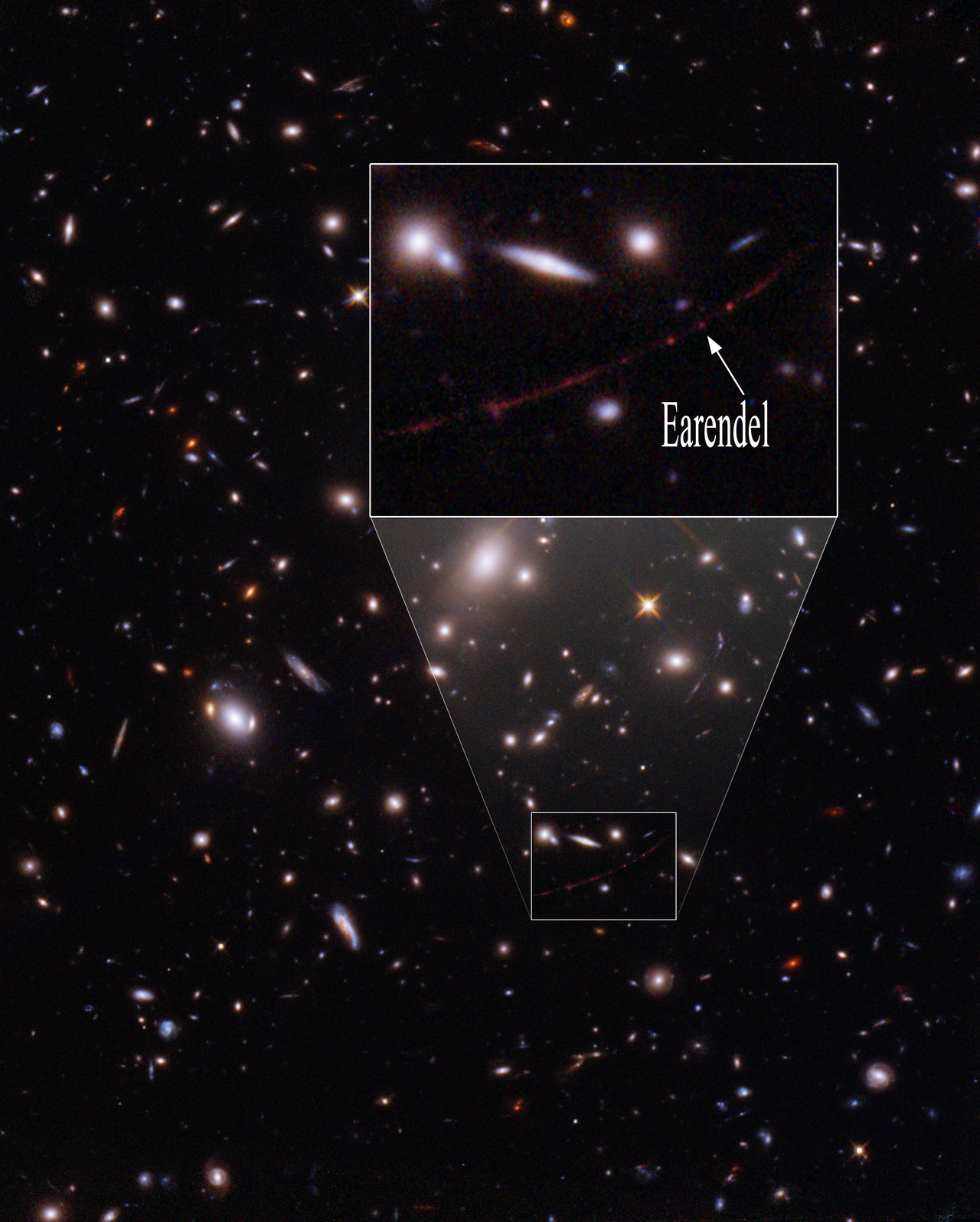Free Courses Sale ends Soon, Get It Now


Free Courses Sale ends Soon, Get It Now



Disclaimer: Copyright infringement not intended.
Context
Details
Highlights
Earendel's Characteristics: The observations suggest that Earendel is a massive B-type star, more than twice as hot as our Sun and incredibly luminous, being about a million times more luminous.
Gravitational Lensing: Both the Hubble and Webb telescopes were able to detect Earendel due to gravitational lensing, a phenomenon where a foreground galaxy bends light, creating a magnifying lens-like effect, enabling the detection of distant celestial objects.
Location and Alignment: Earendel is situated in the Sunrise Arc Galaxy, approximately 12.9 billion years away. The star's detection was made possible because it was aligned behind a space-time wrinkle created by the galaxy cluster WHL0137-08.
Observations of Earendel: Earendel appears as a single point of light, even on Webb's high-resolution infrared imagers, due to its immense distance. Astronomers estimate that the observations reveal Earendel as it appeared around 1 billion years after the Big Bang.
Companions: Typically, stars as large as Earendel have companions. While it was not expected that Webb would be able to detect its companions due to their closeness, there are hints of a cooler, redder companion star based on the colors observed.
Name and Inspiration: Earendel, the star's nickname, is derived from the Old English term for "morning star" or "rising light." This name has a connection to J.R.R. Tolkien's work, particularly "The Silmarillion," where Eärendil is a significant character. The choice of this name was intentional, and it adds a touch of poetic resonance to the discovery.
Redshift and Age: Earendel's light was emitted approximately 900 million years after the Big Bang, making it a relic from the early universe. Its redshift of 6.2 indicates that the light we observe from Earendel has been traveling for about 12.9 billion years. Due to the expansion of the universe, the star's observed position is now much farther away, at a comoving distance of 28 billion light-years.
Mass and Future Evolution: Earendel is estimated to have a mass between 50 and 100 times that of our Sun. Such massive stars typically have short lifetimes and are prone to end their lives in spectacular supernova explosions. There's a small possibility that Earendel could be a population III star, which would mean it contains only primordial elements like hydrogen and helium.
Must Read Articles:
https://www.iasgyan.in/daily-current-affairs/stellar-halo-31
|
PRACTICE QUESTION Q. Which of the following statement(s) about Earendel is/are correct? 1. Earendel is the hottest star ever discovered. 2. The discovery of Earendel was made possible through gravitational lensing. 3. Earendel was named after a character in "The Lord of the Rings" by J.R.R. Tolkien. 4. Earendel is located in the Milky Way galaxy. Please select the correct option: a. 1 only b. 2 and 3 c. 1 and 2 d. 2, 3, and 4 Answer: b) |
© 2024 iasgyan. All right reserved